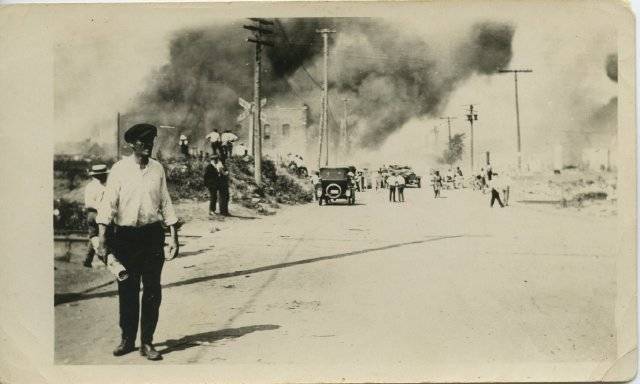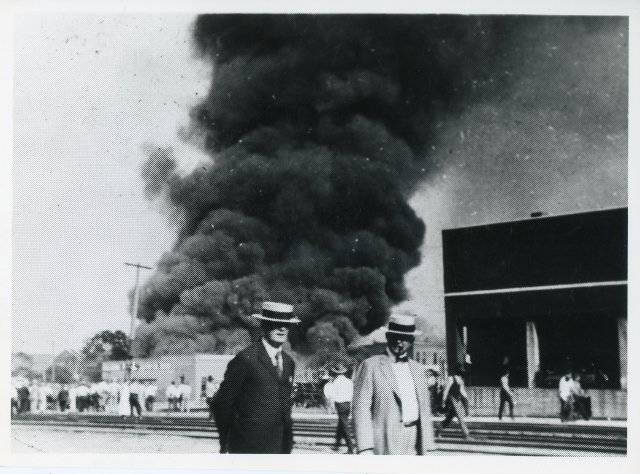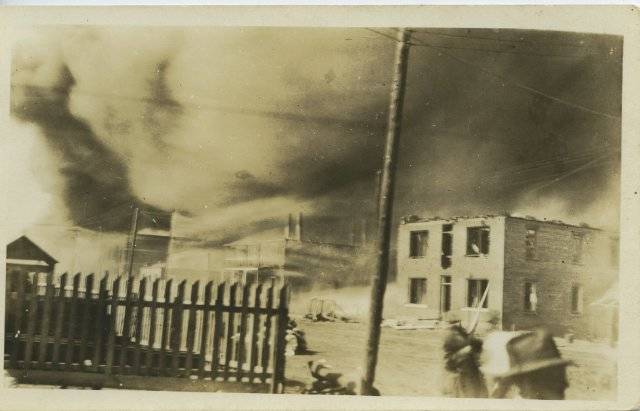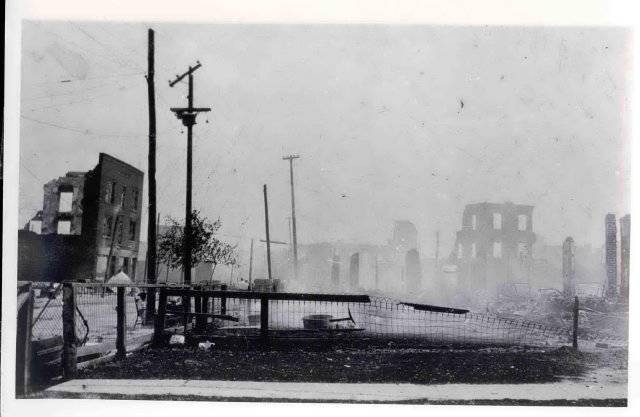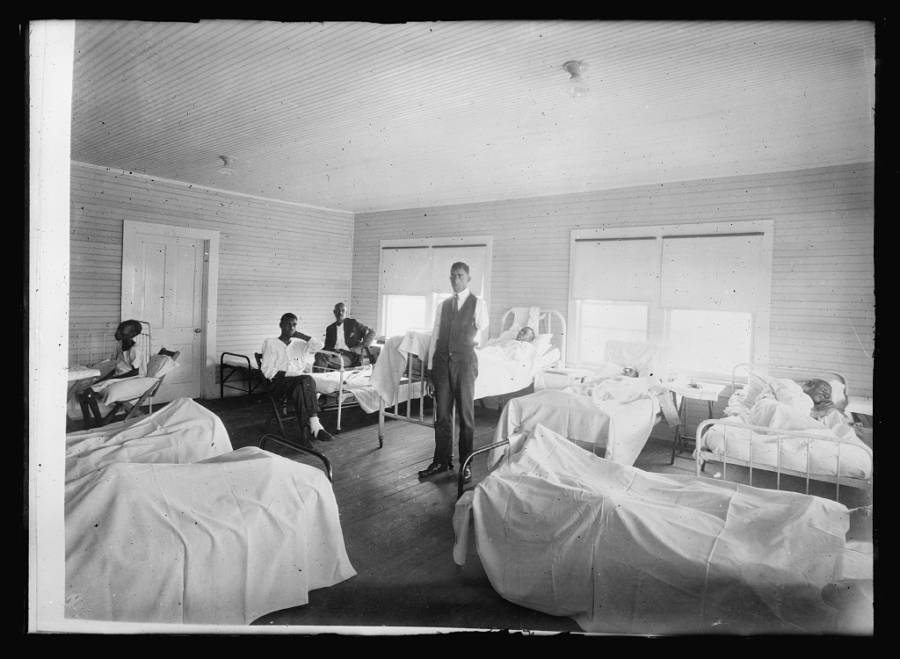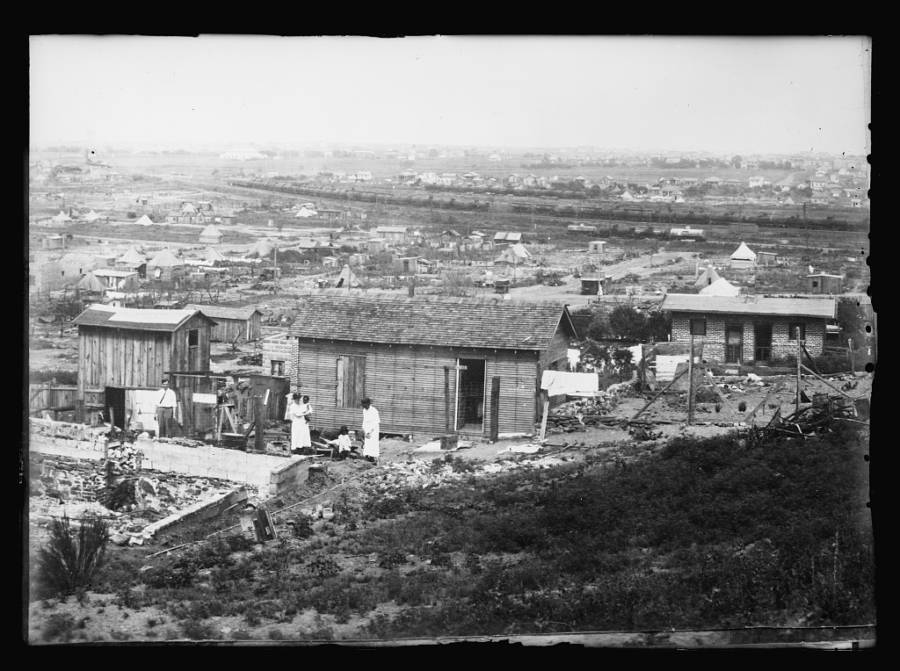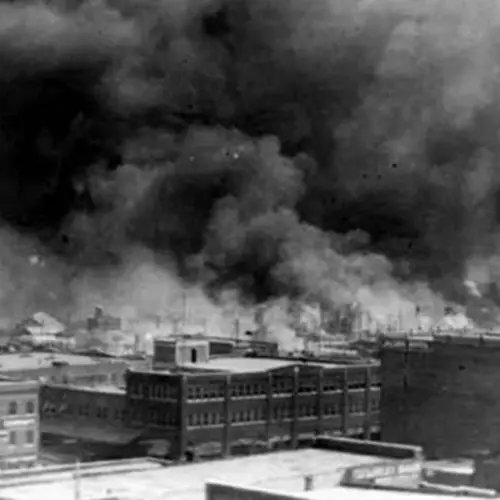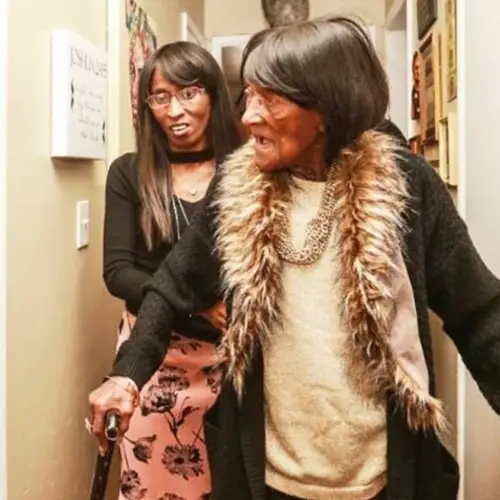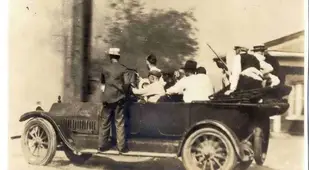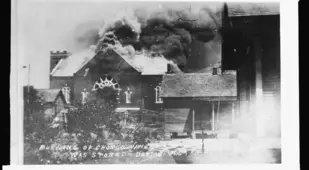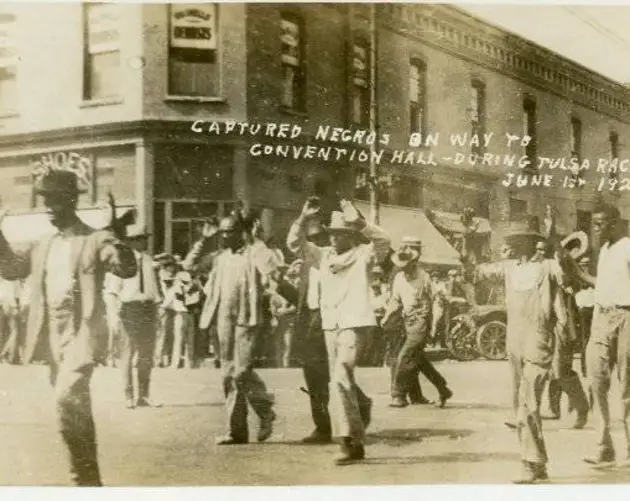"Black Wall Street" was once the United States' wealthiest African-American neighborhood. But during the Tulsa Race Massacre of 1921, a white mob destroyed the whole thing in just one day.
“Black Wall Street.” That was the nickname given to Greenwood, a one-square-mile neighborhood full of wealthy black families in Tulsa, Oklahoma. Ever since the oil boom of the early 20th century, doctors, lawyers, and business-owners thrived in the affluent suburb — until the Tulsa Massacre of 1921, when their homes were burned to the ground.
Sometimes called the “Tulsa Massacre,” the massacre started after a 19-year-old black man named Dick Rowland was accused of sexually assaulting a 17-year-old white woman in an elevator. Rowland insisted he had simply tripped and accidentally fell on her while on his way to the restroom.
The woman, Sarah Page, didn’t press charges, but the community was livid. One paper even ran a story with this headline: “Nab Negro for Attacking Girl in an Elevator.”
A mob gathered in an attempt to lynch Rowland, but the black men of Greenwood wouldn’t let it happen. Armed with shotguns and rifles, 30 residents set up a barricade outside the police station where Rowland was being held.
Shots were fired and the Tulsa Massacre began.
The Emergence Of Black Wall Street Before The Tulsa Massacre
Founded in 1906, Greenwood was built on what used to be Indian Territory. Some African Americans who used to be slaves of tribes were finally able to integrate into the local communities and even buy their own land.
Wealthy black landowner O.W. Gurley was the one who purchased 40 acres of land in Tulsa and named it Greenwood. But he didn't keep all his land — or all his money — to himself.
Gurley soon began loaning money to other black people who wanted to start businesses in Greenwood. Before long, "Black Wall Street" began to thrive on black salespeople and their loyal customers alone.
It didn't take long for racist white people to notice the prosperous black community of Greenwood — and they weren't too happy about it. Arguably, the widespread resentment bubbling beneath the surface made the Tulsa Race Massacre all the more destructive.
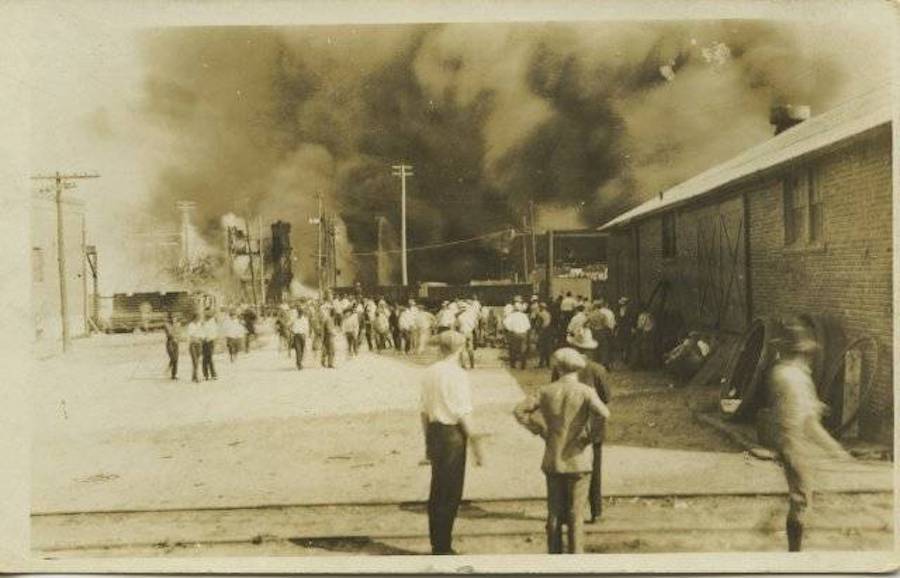
Tulsa Historical Society & MuseumA group of men watches the fire and smoke from the Tulsa race massacre.
Indeed, the white men of Tulsa unleashed their fury on Black Wall Street.
On June 1, 1921, thousands of rioters went through Greenwood, shooting black men in the streets, destroying property, and burning down homes.
They destroyed businesses and looted buildings, essentially leaving the town in ruins. Over the course of just one day, the rioters collectively burned down almost all of Black Wall Street.
As black attorney Buck Colbert Franklin wrote while witnessing the event, "I could see planes circling in mid-air. They grew in number and hummed, darted and dipped low. I could hear something like hail falling upon the top of my office building. Down East Archer, I saw the old Mid-Way hotel on fire, burning from its top, and then another and another and another building began to burn from their top."
"Lurid flames roared and belched and licked their forked tongues into the air. Smoke ascended the sky in thick, black volumes and amid it all, the planes—now a dozen or more in number—still hummed and darted here and there with the agility of natural birds of the air."
"The side-walks were literally covered with burning turpentine balls. I knew all too well where they came from, and I knew all too well why every burning building first caught from the top," he continues. "I paused and waited for an opportune time to escape. 'Where oh where is our splendid fire department with its half dozen stations?' I asked myself. 'Is the city in conspiracy with the mob?'"
It didn't take long before Oklahoma's governor declared martial law, bringing in the National Guard to end the violence.
But some say the police and the National Guard actually joined in on the fights, dropping sticks of dynamite from planes and firing machine guns into swarms of black residents.
In just 24 hours, it was all over. But the damage had already been done.
The Grisly Aftermath Of The Tulsa Race Massacre
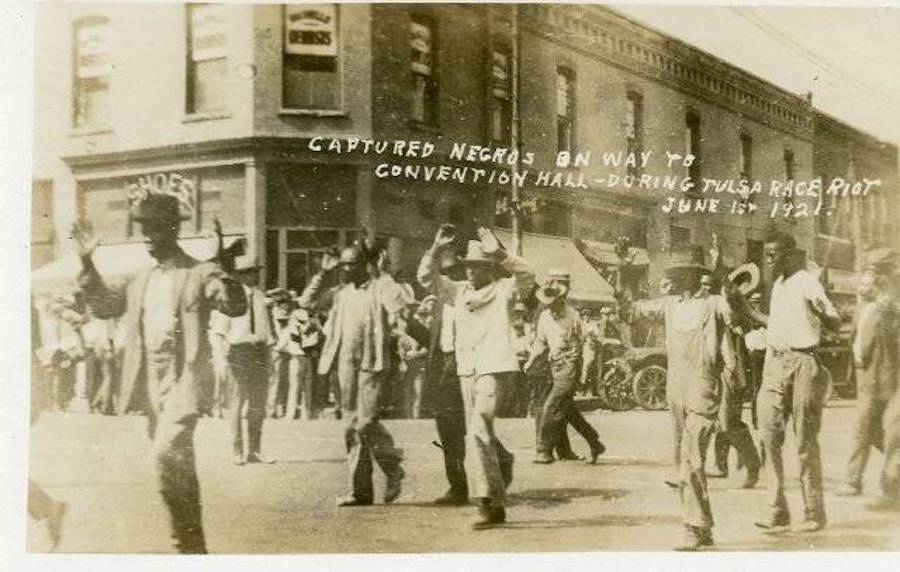
Tulsa Historical Society & MuseumBlack men are marched down the streets of Greenwood, guns pointed at their backs.
By morning, Greenwood was nothing more than ashes on the ground.
Initial reports claimed that 35 people died in the Tulsa Race Massacre. But more recently in 2001, an investigation by the Tulsa Race Riot Commission argued that the death toll was actually closer to 300. Thousands more had been injured.
More than 6,000 black men had been arrested and detained by the National Guard, and were only released if a white employer or white citizen would vouch for them. Some of the men were held as long as eight days.
More than 35 blocks on the streets had been burned, which led to more than $1.5 million in property damage. Today, that would equate to approximately $30 million.
Among Greenwood residents who survived, nearly all — around 10,000 people — were left completely homeless. Overnight, the wealthiest black families in America went from living in a thriving, well-educated suburb to huddling for warmth in crude Red Cross tents.
Within days of the Tulsa Race Massacre, the black community tried to start rebuilding Greenwood again. And yet, thousands of these people were forced to spend the winter of 1921 and 1922 in those same flimsy tents.
Although Greenwood was eventually rebuilt, it would never be the same again. And many people who lived there would never truly recover from the trauma and chaos.
Meanwhile, the case against Dick Rowland would later be dismissed in September 1921. Sarah Page (the white woman in the elevator) did not appear as a complaining witness against Rowland in court — perhaps the main reason why the case didn't go anywhere.
It remains a mystery what happened to Dick Rowland after he was exonerated. Some say that after his release, he immediately left Tulsa for Kansas City. That would certainly not be surprising — especially considering what would happen next in Tulsa.
The Response To The Destruction Of Black Wall Street
As described in a 1921 New York Times article, days after the Tulsa massacre, a city judge ordered the complete restitution and rehabilitation of the destroyed black belt.
"The rest of the United States must know that the real citizenship of Tulsa weeps at this unspeakable crime and will make good the damage, so far as it can be done, to the last penny," the judge added.
And yet, that never happened.
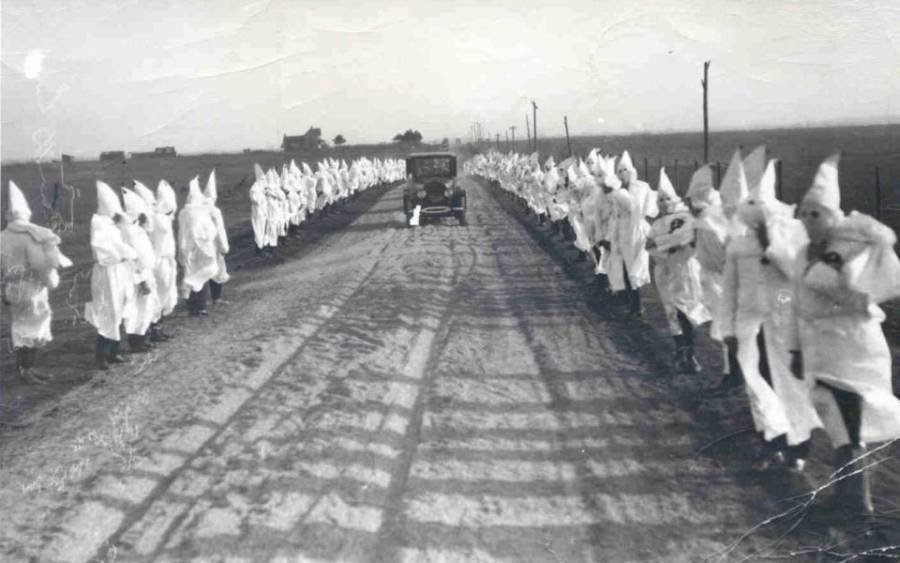
Tulsa Historical Society & MuseumAfter the Tulsa Massacre, KKK membership in Oklahoma skyrocketed.
An all-white grand jury would later blame black Tulsans for the lawlessness in a series of recriminations.
The white men of Tulsa had burned down homes and killed people like dogs in the street – and not a single one was ever prosecuted.
And despite being the worst massacre in Oklahoma's history, the Tulsa Massacre was nearly erased from national memory forever.
It wasn't until 1971 that Impact Magazine editor Don Ross published one of the first accounts of the massacre. This was 50 years after it happened. According to NPR, Ross is often credited with being among the first to bring national attention to this forgotten piece of history.
At the turn of the 21st century — 80 years after the event — the Tulsa Race Riot Commission would issue a report and demand that survivors receive reparations.
Still, both a district court and the U.S. Supreme Court would deny that request — saying that the statute of limitations had worn out.
The Legacy Of The Tulsa Massacre
Even though the survivors didn't win reparations, organizations such as the Tulsa Historical Society are working toward a new goal: raising awareness of the Tulsa race massacre's existence and significance.
Shockingly, the Tulsa Race Massacre was not part of the Oklahoma public schools' curriculum until 2000, and an overview of the event was only recently added to general American history books.
And yet, some survivors of the Tulsa Massacre, like Olivia Hooker, kept holding out for justice despite the many disappointments.
"We thought we might live long enough to see something happen, but even though I've lived 99 years, nothing of that sort has actually happened," Hooker, who was six years old at the time of the race riot, told Al-Jazeera. "You keep hoping, you keep hope alive, so to speak."
Sadly, Hooker died in November 2018 at the age of 103.
Damario Solomon-Simmons, an African-American attorney in Tulsa, isn't optimistic about justice being served anytime soon.
Of the last remaining survivors, he said, "It's sad to know that they're probably all going to die without receiving anything. Unfortunately, black life in America is still not worth that much."
After this look at the Tulsa race massacre of 1921, check out these images of 1943's Zoot Suit Riots and 1992's riots in LA. Then, see the most devastating riots in American history.

